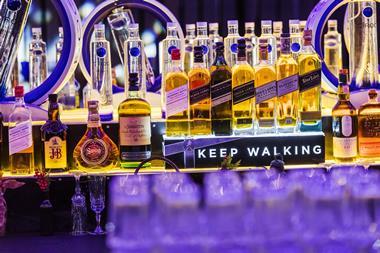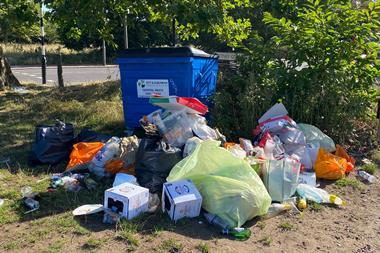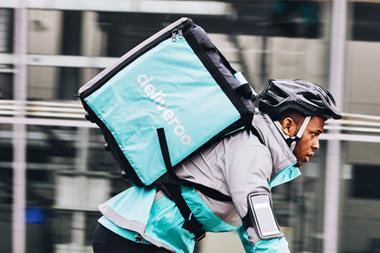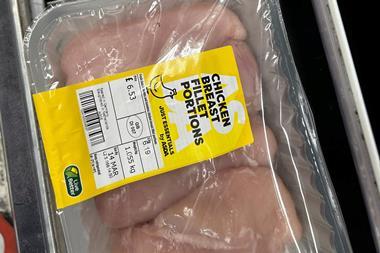It has a premium look and a 5% abv, but can the so-called ‘wifebeater’ shake off its old image?
As the adulation heaped on Heath Ledger’s Joker shows, the public loves an anti-hero.
UK drinkers have enjoyed a few dark nights of their own thanks to Stella Artois. Over the past decade the beer has undergone a reverse makeover from premium exclusivity to off-licence ubiquity, earning itself the nickname ‘wifebeater’, which, despite brewer InBev’s best efforts, has proved hard to shake.
InBev recently announced plans to restore the brand to its former glory, unveiling a new 4% abv line in the off-trade this summer that will reach pubs later this year. That was followed by confirmation that the main brand would be “harmonised” from 5.2% abv in the off-trade and 5.1% in pubs to 5% across the range.
Meanwhile, it has embarked on a packaging revamp to play up the brand’s premium credentials, giving greater emphasis to the Anno 1366 logo boasting of the Stella heritage. But will its efforts to revitalise the brand work?
InBev’s UK and Ireland boss is certainly confident they will, though he is quick to stress that the changes represent more of a tweak to Stella’s brand values than an overhaul.
“We do not see this as a repositioning,” says Stuart MacFarlane. “We are investing in refreshed, high-quality and eye-catching packaging. If anything, these changes will help reinforce Stella Artois as a famous brand that consumers already know well and respect.”
The reduction in abv will “allow consumers to enjoy a consistent-strength lager at home or in the pub”, MacFarlane says, and will not impact on either the flavour of the original or the continued roll-out of the lower-alcohol variant. He cites the latest television campaign as evidence InBev is investing significantly in the Stella brand, the strengths of which he cites as “craftsmanship, heritage and quality”, rather than abv.
The need for investment is clear. InBev reported a 4.1% dip in second-quarter beer sales volumes in the UK, while Nielsen data shows Stella sales dropped around 7% in the year to May to £505.2m – from £543.5m the previous year.
This less-than-stellar performance belies a brand that has become a victim of its own success. Throughout the 1980s and much of the following decade, Whitbread – brewing under licence from InBev and anxious to maintain Stella’s premium cachet – kept a tight rein on its off-trade availability, despite pressure from leading multiples. However, at the turn of the millennium Asda struck a deal with InBev to bring in the beer directly, bypassing Whitbread.
The full ramifications have only now become fully apparent. Stella, the UK’s leading lager brand since 1990, was usurped this year by Carlsberg as the most popular take-home beer by volume, shifting 491 million pints compared with Carlsberg’s 495 million.
Though the Carlsberg figure includes variants such as Carlsberg Export and Stella remains – for now – the most successful single brand in value terms, this is a double-edged sword for the brand, which has become the focus for much of the recent criticism over excessive drinking and antisocial behaviour.
This year pub chain Young’s, looking to move itself upmarket, delisted Stella from 120 pubs for not being premium enough. InBev dismissed this as a publicity stunt, labelling it “very insignificant”.
But it hasn’t made it any easier for the brand to distance itself from its ‘wifebeater’ label of old. And with the economic outlook bleak, the ‘reassuringly expensive’ tagline is hardly set for comeback.
Restoring Stella’s shine could take a while yet.
As the adulation heaped on Heath Ledger’s Joker shows, the public loves an anti-hero.
UK drinkers have enjoyed a few dark nights of their own thanks to Stella Artois. Over the past decade the beer has undergone a reverse makeover from premium exclusivity to off-licence ubiquity, earning itself the nickname ‘wifebeater’, which, despite brewer InBev’s best efforts, has proved hard to shake.
InBev recently announced plans to restore the brand to its former glory, unveiling a new 4% abv line in the off-trade this summer that will reach pubs later this year. That was followed by confirmation that the main brand would be “harmonised” from 5.2% abv in the off-trade and 5.1% in pubs to 5% across the range.
Meanwhile, it has embarked on a packaging revamp to play up the brand’s premium credentials, giving greater emphasis to the Anno 1366 logo boasting of the Stella heritage. But will its efforts to revitalise the brand work?
InBev’s UK and Ireland boss is certainly confident they will, though he is quick to stress that the changes represent more of a tweak to Stella’s brand values than an overhaul.
“We do not see this as a repositioning,” says Stuart MacFarlane. “We are investing in refreshed, high-quality and eye-catching packaging. If anything, these changes will help reinforce Stella Artois as a famous brand that consumers already know well and respect.”
The reduction in abv will “allow consumers to enjoy a consistent-strength lager at home or in the pub”, MacFarlane says, and will not impact on either the flavour of the original or the continued roll-out of the lower-alcohol variant. He cites the latest television campaign as evidence InBev is investing significantly in the Stella brand, the strengths of which he cites as “craftsmanship, heritage and quality”, rather than abv.
The need for investment is clear. InBev reported a 4.1% dip in second-quarter beer sales volumes in the UK, while Nielsen data shows Stella sales dropped around 7% in the year to May to £505.2m – from £543.5m the previous year.
This less-than-stellar performance belies a brand that has become a victim of its own success. Throughout the 1980s and much of the following decade, Whitbread – brewing under licence from InBev and anxious to maintain Stella’s premium cachet – kept a tight rein on its off-trade availability, despite pressure from leading multiples. However, at the turn of the millennium Asda struck a deal with InBev to bring in the beer directly, bypassing Whitbread.
The full ramifications have only now become fully apparent. Stella, the UK’s leading lager brand since 1990, was usurped this year by Carlsberg as the most popular take-home beer by volume, shifting 491 million pints compared with Carlsberg’s 495 million.
Though the Carlsberg figure includes variants such as Carlsberg Export and Stella remains – for now – the most successful single brand in value terms, this is a double-edged sword for the brand, which has become the focus for much of the recent criticism over excessive drinking and antisocial behaviour.
This year pub chain Young’s, looking to move itself upmarket, delisted Stella from 120 pubs for not being premium enough. InBev dismissed this as a publicity stunt, labelling it “very insignificant”.
But it hasn’t made it any easier for the brand to distance itself from its ‘wifebeater’ label of old. And with the economic outlook bleak, the ‘reassuringly expensive’ tagline is hardly set for comeback.
Restoring Stella’s shine could take a while yet.


















No comments yet